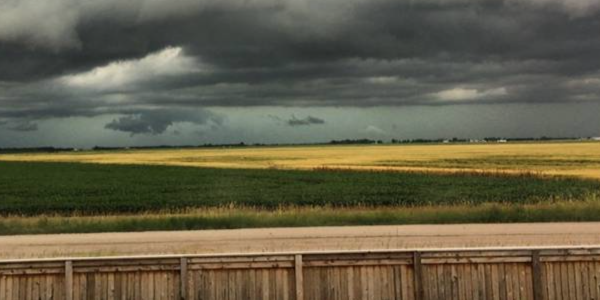Falling oil prices and job losses have put a dent in Western Canadians’ spending on consumer packaged goods, according to a new study by Nielsen.
While the Prairies (Alberta, Saskatchewan, Manitoba) led CPG growth for the past five years, that’s no longer the case. In 2015, the Prairies’ growth in CPG fell behind the Canadian average, with the region experiencing a 3.3% increase in annual sales versus 3.4% for Canada overall. In the first three months of 2016, the Prairies had a 1.9% increase in CPG sales compared to 3% for Canada.
“If we look back in our rearview mirror, the Prairies has always been the economic growth engine for consumer packaged goods, and has performed stronger than the national average,” said Carman Allison, VP of consumer insights at Nielsen Canada.
“They’re still growing slightly, mostly due to rising prices. But they’re now lagging the national average, so that’s been a huge change.”
A survey by Nielsen looked at consumer attitudes in Alberta, which has seen its unemployment rate jump from 5% to 7% in two years. According to the data, 35% of Albertans said they are worse off financially than a year ago, and 75% are trying to spend less on their grocery bill.
“There’s been massive job loss in Alberta… and with this job loss comes lower growth for consumer packaged goods and a consumer who is so focused on value now,” said Allison. “That’s become the new mainstream.”
According to the Nielsen survey, Albertans are looking to save money in a variety of ways. The vast majority (87%) stock up on promotional items, 70% only buy on sale, and 58% use coupons. In addition, 64% said they switch stores to save money.
“They’re longer shopping on auto pilot and going to the traditional store that they go to every week,” said Allison. “Consumers are consciously willing to put the time and effort trying to find the store with the best prices.”
Another 51% of Albertans use loyalty points to save money, 44% price match, 57% buy larger sizes, 54% buy store brands, and 59% are just buying essentials.
“That’s why we’re not seeing a lot of growth as well: consumers are making those discretionary tradeoffs and saying, ‘I’ve got to save money. I’ve got to figure out ways to make my budget stretch, so I’m only going to buy what I need,’” said Allison.
In 2014, 12.3% of Albertans considered themselves “free spenders,” meaning money is no object and they can buy what they need. That number declined to 5.9% in 2016—a decrease of 105,000 households.
Meanwhile, those in the “living comfortably” bucket—what Nielsen defines as the middle class—grew from 65.4% in 2014 to 66.8% in 2016. “Shopping basics” consumers—those who only have enough money for food, shelter and basics—grew from 22.3% in 2014 to 27.3% in 2016—an increase of 82,000 households.
“When we first did this survey back in 2014, Alberta had the highest percentage of ‘free spenders’ in Canada… and they had the lowest percentage of ‘shopping basics’ consumers,” said Allison. “Now when we fast forward to 2016, you can see how fast things have changed.”
The shifts in Albertans’ spending behaviours and attitudes present a big opportunity for discount retailers in the province.
“Walmart and Loblaw’s No Frills are aggressively expanding their footprint in Western Canada right now… and it’s working out very well for those retailers,” said Allison. “It’s the perfect timing for them because of the environmental and how consumers are looking to save.”
And while consumers are looking for value, Allison said retailers shouldn’t go too deep on discounts. “What we’ve learned is that when things are in promotion, consumers don’t necessarily buy more over the long term—they just spend less,” he said. “The money is staying in consumers’ wallets versus going back into the industry… Obviously, you still want to promote, but you want to make sure you’re promoting in a way that allows you to still maintain your business.”
One good strategy for manufacturers is look offer products in larger sizes. “You’ve got a consumer that’s focused on value and is looking to save, and larger sizes provide a lower cost per use,” said Allison.
In addition, Alberta has some of the largest households in Canada, comprised of young couples with children. “If there’s any region in Canada right now where larger sizes are going to meet the needs of consumers, it’s Alberta,” said Allison.










